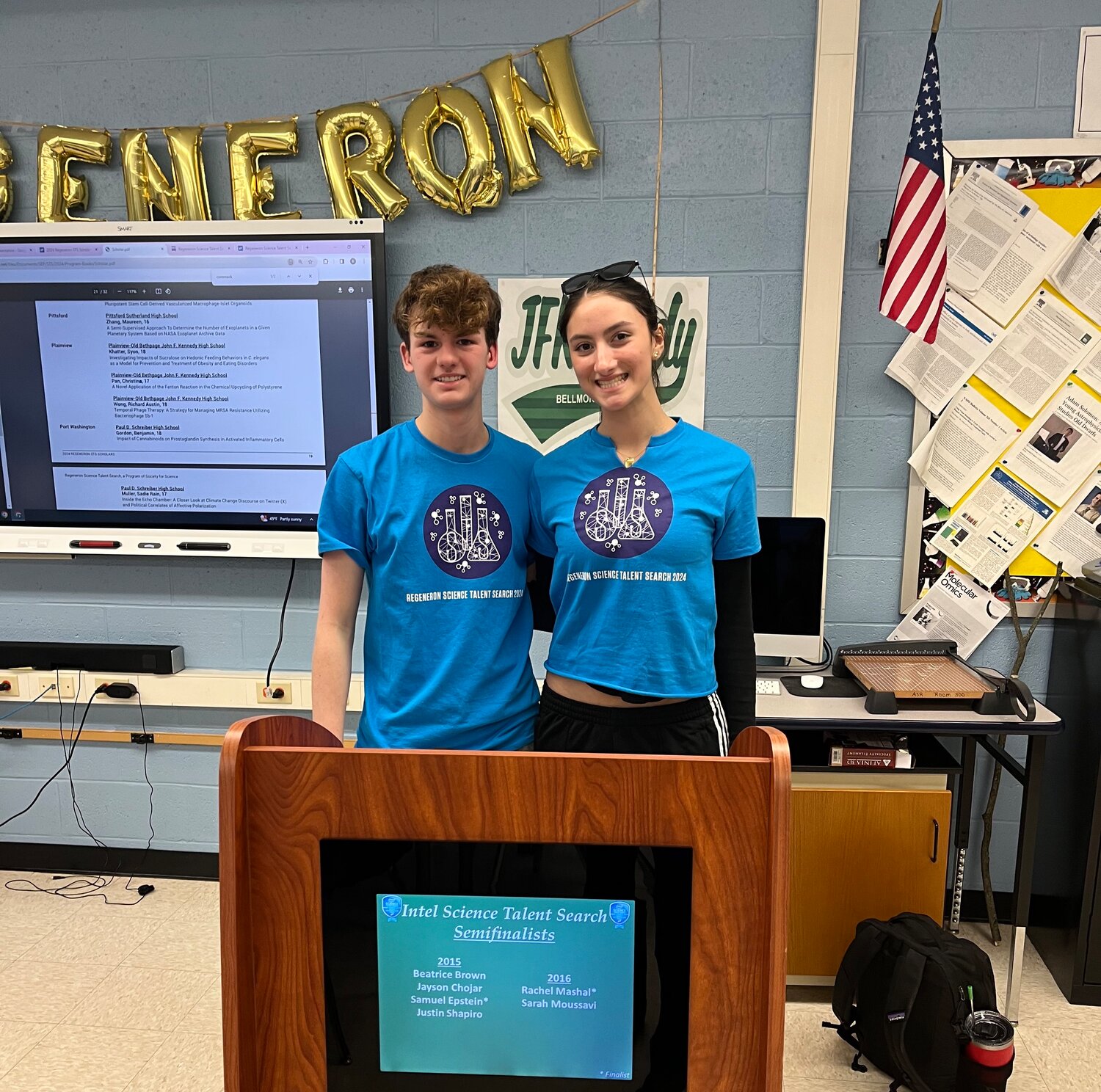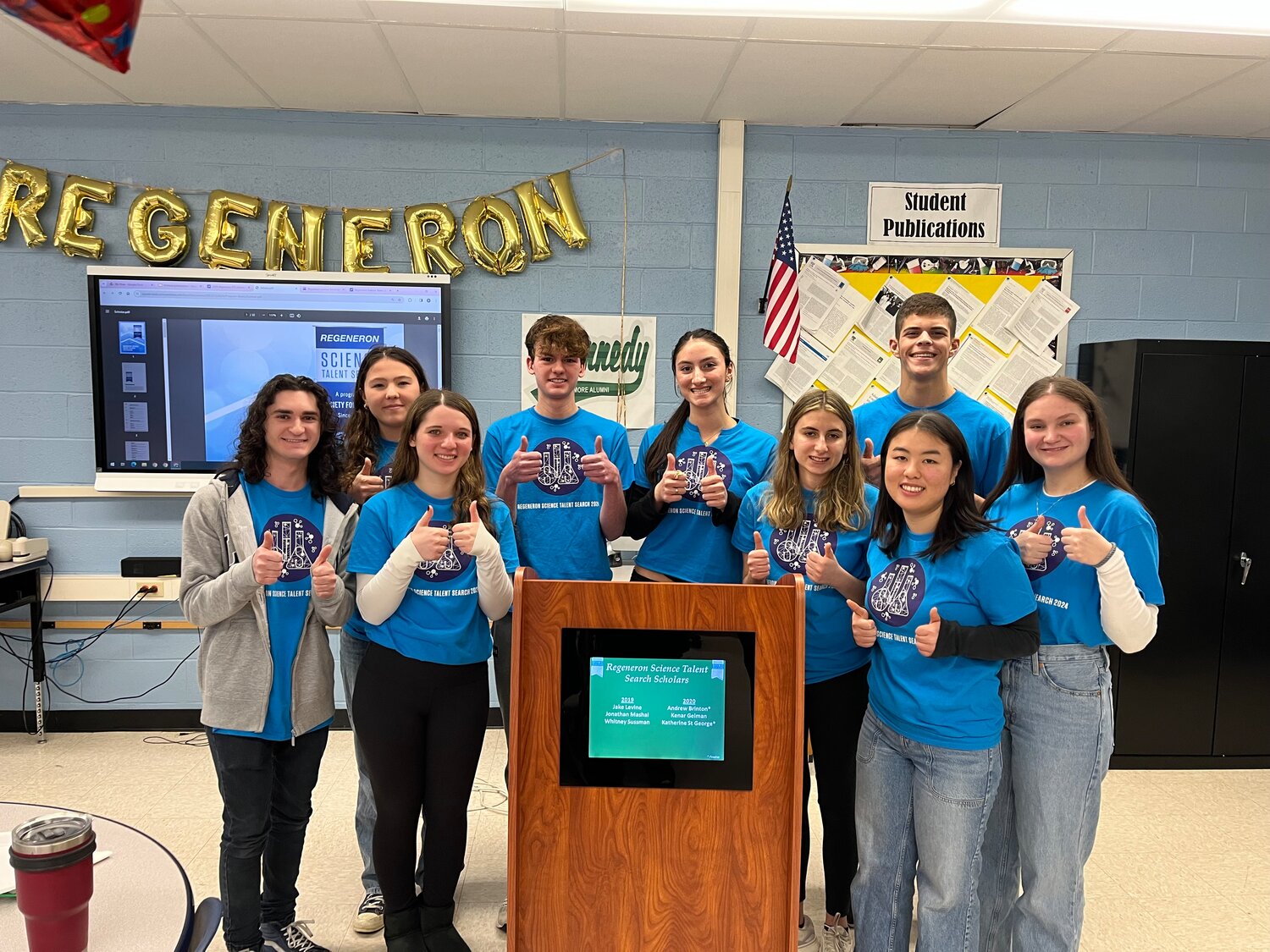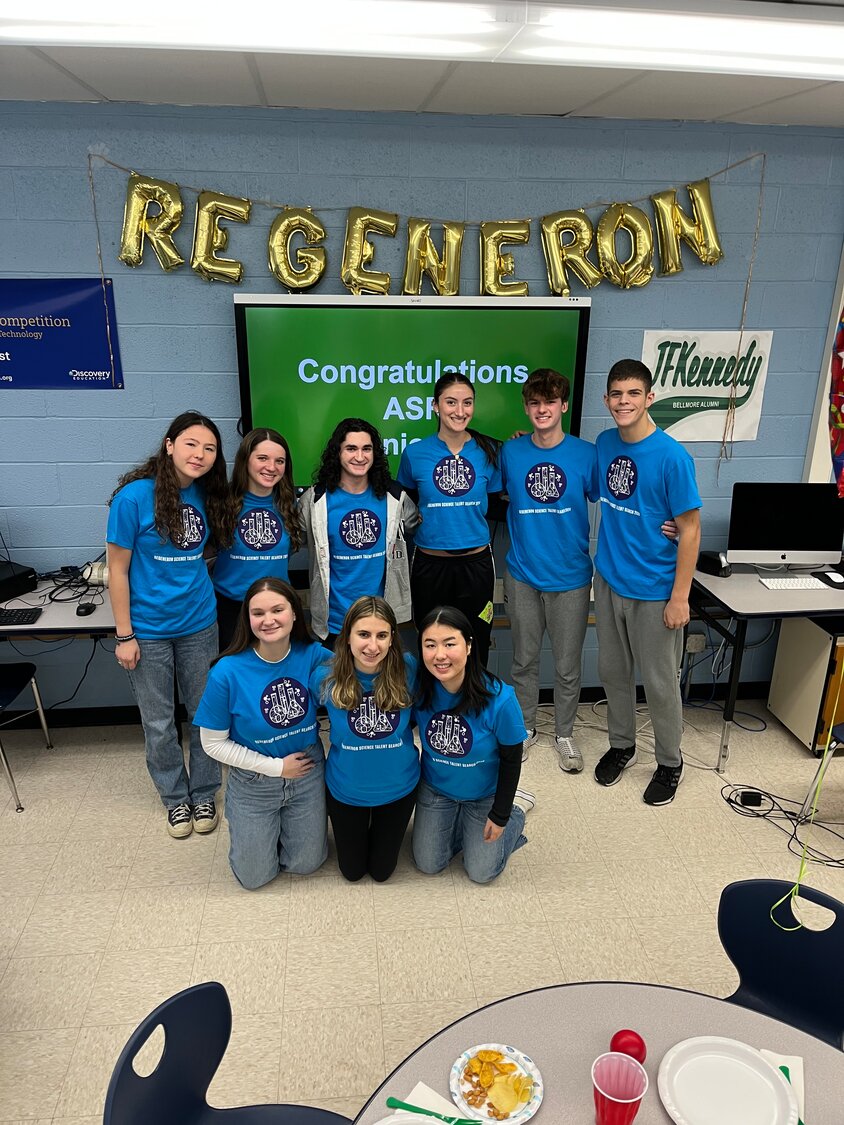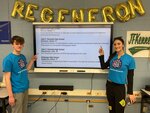Meet your 2024 John F Kennedy High School Regeneron scholars
In total, nine students submitted projects
Two students at John F. Kennedy High School, in the Bellmore-Merrick Central High School District, were named semifinalists in the 2024 Society for Science & Public Science Talent Search competition, sponsored by the pharmaceutical company Regeneron. The talent search is among the most prestigious science competitions for high school students in the United States.
Claire Schwartz and Cole Wasserman both dedicated hundreds of hours to their projects while enrolled in Kennedy’s Advanced Science Research program, or ASR, under the leadership of teachers Barbi Frank and Alexis Vandergoot.
Being named a semifinalist is no easy feat: Out of nearly 2,000 applicants, only 300 are recognized. They were each awarded $2,000, and Kennedy’s program received $2,000 per student as well. This is the 20th consecutive year that at least one Kennedy student has been named a semifinalist.
Students join the ASR program as sophomores, following an extensive application process. Around two dozen students are accepted into the program each year, although not everyone completes the course. Projects were submitted early last November.
Alongside Schwartz and Wasserman, seven other seniors submitted projects this year — Maxwell Frank, Dylan Friedman, Ava Goldsmith, Vanessa Kacaj, Paula Pastor, Minami Rodger and Fiona Yeung.
Each of them completed impressive, graduate-level work.
Schwartz, 17, of Merrick, told the Herald she was motivated to join ASR because her father, Adam Schwartz, had Frank as a teacher when he was in high school. A varsity athlete on Kennedy’s volleyball team, she balanced sports with her research project over the past three years.
Her project, “The Administration of Sulforaphane via Broccoli Sprouts Ameliorates Parkinson’s Disease Phenotypes in a Drosophila Melanogaster Model,” studied the effects of sulforaphane, a plant compound found in many cruciferous vegetables, in combating Parkinson’s disease — a progressive disorder that affects the nervous system and parts of the body controlled by nerves.
Drosophila melanogaster, or the fruit fly, is often used as a model organism in research because it has a powerful multicellular, genetic model system. Schwartz focused on fruit flies that were exhibiting symptoms of Parkinson’s. The flies were fed broccoli sprouts, which contain high levels of sulforaphane, to see if it benefited them, compared with flies that were fed regular food.
“I tested the toxicity of the sulforaphane on the flies, along with their feeding behavior on the sulforaphane, as well as their performance on the food,” Schwartz said. “I found that it did have a beneficial impact, compared to flies on regular food that had Parkinson’s disease.”
Her mentor was based at Long Island University, where Schwartz completed her research in the school’s labs.
Wasserman, 17, of Bellmore, said he was motivated to join ASR because he has always been fascinated by science. He is Kennedy’s Class of 2024 salutatorian, and will attend Brown University this fall.
“In high school, I wanted to have an impact on the scientific field, and I always wanted to work in a lab,” he said. “So to me, ASR was the perfect opportunity for me to explore my passion.”
Wasserman’s project, “APC-Mediated Expansion of hPSC-Derived Natural Killer Cells,” was completed at labs at the Icahn School of Medicine at Mount Sinai in Manhattan, where his mentor was based. Wasserman studied a potential novel cancer treatment that uses a body’s natural “killer cells” — white blood cells that can naturally kill off cancer cells or virally infected cells.
His research involved natural killer cells derived from embryonic stem cells, blank cells that can divide and develop into many different cells. The manipulation of pathways within the cells, Wasserman explained, can generate cohorts of cytotoxic killer cells that kill cancer better than normal killer cells. He cultured the cells in order to allow them to divide, and see how well they divided, in comparison with normal natural killer cells.
“I found that these cytotoxic natural killer cells actually expanded much worse than normal killer cells,” Wasserman said, “which basically means that as of now, they can’t be used as a treatment for cancer because it’s not feasible to generate enough of them. My research suggests that new methods need to be developed for expanding them.”
Wasserman said he was attracted to stem cell research because of the cells’ medical potential.
“They have a lot of potential for regenerative medicine, the potential for cancer treatment, they have potential for a whole host of different issues,” he said.
While ASR is a challenging course, both Schwartz and Wasserman said it was one they enjoyed.
“This journey has been a very rigorous experience,” Schwartz said. “It’s very time-consuming, and it takes a lot of work and effort, but I really enjoyed doing it. I learned skills that I can utilize for a very long time.”
Wasserman said the experience taught him about perseverance. At one point his project was contaminated, and rather then giving up, he figured out ways to overcome the setback.
“I think it really shows that you’ve got to keep pushing through it,” he said. “If you work hard enough, you can overcome everything. I think this whole experience just solidified that I want to do research. I want to go into medicine; I want to still have impacts on the medical field. It’s just been such an amazing experience to have in high school.”
Three students at Wellington C. Mepham High School, in the Bellmore-Merrick Central High School District, were also named semifinalists in the 2024 Society for Science & Public Science Talent Search competition. That story will appear in next week’s issue.














